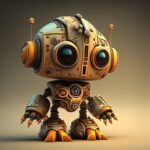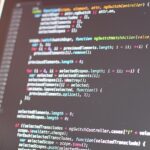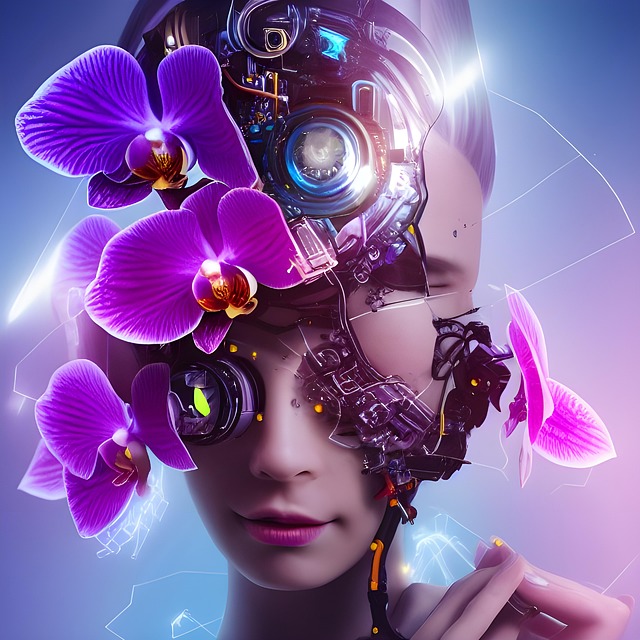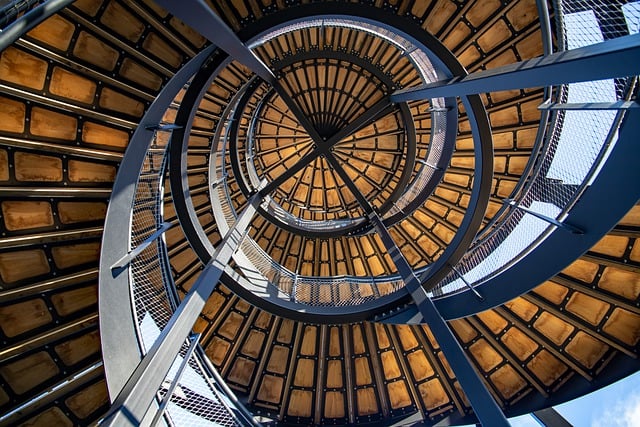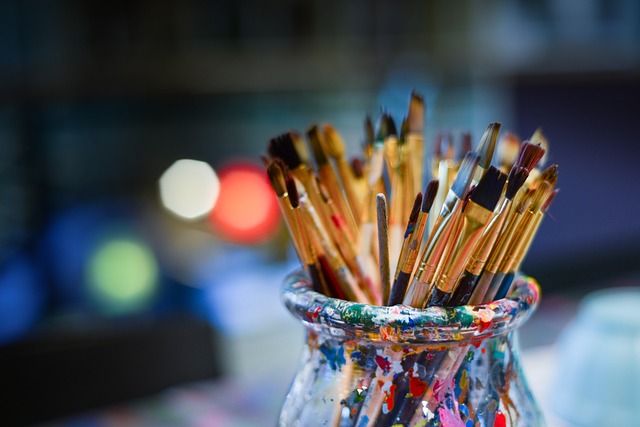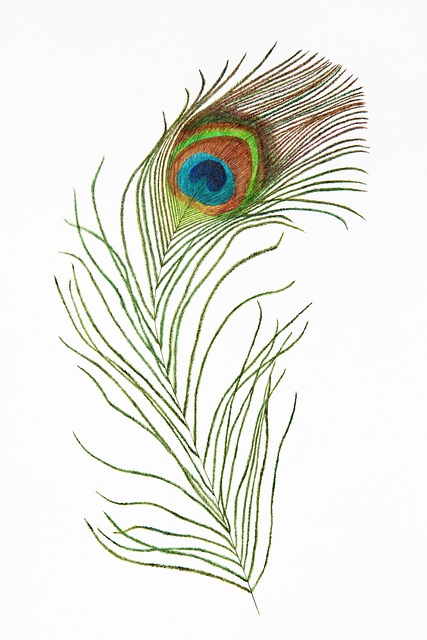# AI Art: Blurring the Lines Between Human Expression and Machine-Generated Masterpieces
The advent of artificial intelligence (AI) has transformed numerous fields, and the art world is no exception. AI art represents a fascinating intersection of technology and creativity, challenging our traditional notions of authorship, creativity, and the very definition of art itself. As algorithms become increasingly sophisticated, the boundaries between human expression and machine-generated masterpieces continue to blur, prompting a re-evaluation of what it means to create and appreciate art in the modern era.
## The Rise of AI in the Art World
Initially, the concept of AI generating art might have seemed far-fetched, relegated to the realm of science fiction. However, with advancements in machine learning, particularly in deep learning and neural networks, AI has demonstrated an impressive ability to produce visually stunning works. Programs like DeepArt, DALL-E, and Artbreeder have gained popularity by allowing users to create unique pieces through the manipulation of algorithms. These tools can analyze vast datasets of existing artworks, learning to replicate styles, themes, and techniques that resonate with human audiences.
Moreover, the democratization of art creation has been significantly impacted by these technologies. Artists and non-artists alike can now experiment with AI tools, enabling anyone to produce art with relative ease. This accessibility has led to an explosion of creativity, as individuals explore new forms of expression that merge human intuition with machine precision. The implications of this shift are profound, as they challenge traditional hierarchies within the art world, allowing a broader range of voices to emerge.
## The Philosophical Implications of AI Art
As AI-generated art gains traction, philosophical questions arise about the nature of creativity and the role of the artist. One must consider whether a machine can truly be considered an artist or if it merely serves as a tool for human expression. The distinction between creator and creation becomes increasingly complex when an algorithm can generate a piece that elicits emotional responses similar to those provoked by human artists.
Critics argue that art requires a depth of experience and emotional engagement that machines lack. They posit that while AI can mimic styles and techniques, it cannot replicate the lived experiences that inform a human artist’s work. This perspective emphasizes the importance of intention and emotional resonance in the artistic process. Conversely, proponents of AI art contend that creativity is not exclusive to humans; rather, it can manifest in various forms, including those generated by machines. This debate invites a broader exploration of what constitutes creativity, urging society to reconsider the parameters of artistic expression.
Additionally, the implications of AI art extend beyond philosophical musings to practical concerns regarding copyright and ownership. With AI systems capable of generating art based on existing works, questions arise about intellectual property rights. If a machine creates a piece that closely resembles a famous artwork, who owns the rights? The original artist, the programmer, or the user who prompted the AI? These legal ambiguities highlight the need for a reevaluation of copyright laws in the context of AI-generated content.
## The Future of Art in an AI-Dominated Landscape
Looking ahead, the future of art in an AI-dominated landscape appears both exciting and uncertain. Artists are beginning to embrace AI not as a replacement for human creativity but as a collaborative partner. By harnessing the power of AI, artists can push the boundaries of their work, exploring new themes and techniques that were previously unimaginable. This collaboration can lead to innovative forms of art that fuse traditional methods with cutting-edge technology, creating a rich tapestry of expression that reflects the complexities of contemporary society.
Furthermore, the rise of AI art has the potential to reshape the art market. Galleries and collectors are increasingly recognizing the value of machine-generated pieces, leading to a growing acceptance of AI art in exhibitions and auctions. In some cases, AI-generated works have fetched staggering prices, challenging preconceived notions about the worth of art and the criteria for valuation. As this trend continues, it may redefine the relationship between artists, collectors, and the institutions that support them.
Nevertheless, it is crucial to approach this evolution with a sense of caution. The proliferation of AI art raises concerns about the potential for homogenization in artistic styles. If algorithms are trained on existing datasets, there is a risk that the resulting art may lack the diversity and originality that characterize human creativity. Artists must remain vigilant in maintaining their unique voices, ensuring that AI serves as a tool for inspiration rather than a crutch that stifles innovation.
## Conclusion: Embracing the New Paradigm
In conclusion, the emergence of AI art represents a paradigm shift in the way we understand and engage with creativity. As machines become increasingly adept at generating visually captivating works, the lines between human expression and machine-generated masterpieces continue to blur. This evolution invites a reexamination of the very essence of art, challenging us to reconsider our definitions of creativity, authorship, and value.
While the implications of AI art are profound, it is essential to embrace this new landscape with an open mind. By fostering collaboration between human artists and AI technologies, we can unlock new avenues of expression that enrich our cultural landscape. Ultimately, the future of art lies not in choosing between human and machine but in finding harmony between the two, creating a vibrant tapestry of creativity that reflects the complexities of our ever-evolving world.

